Canadian Applied and Industrial Mathematics Society 2022
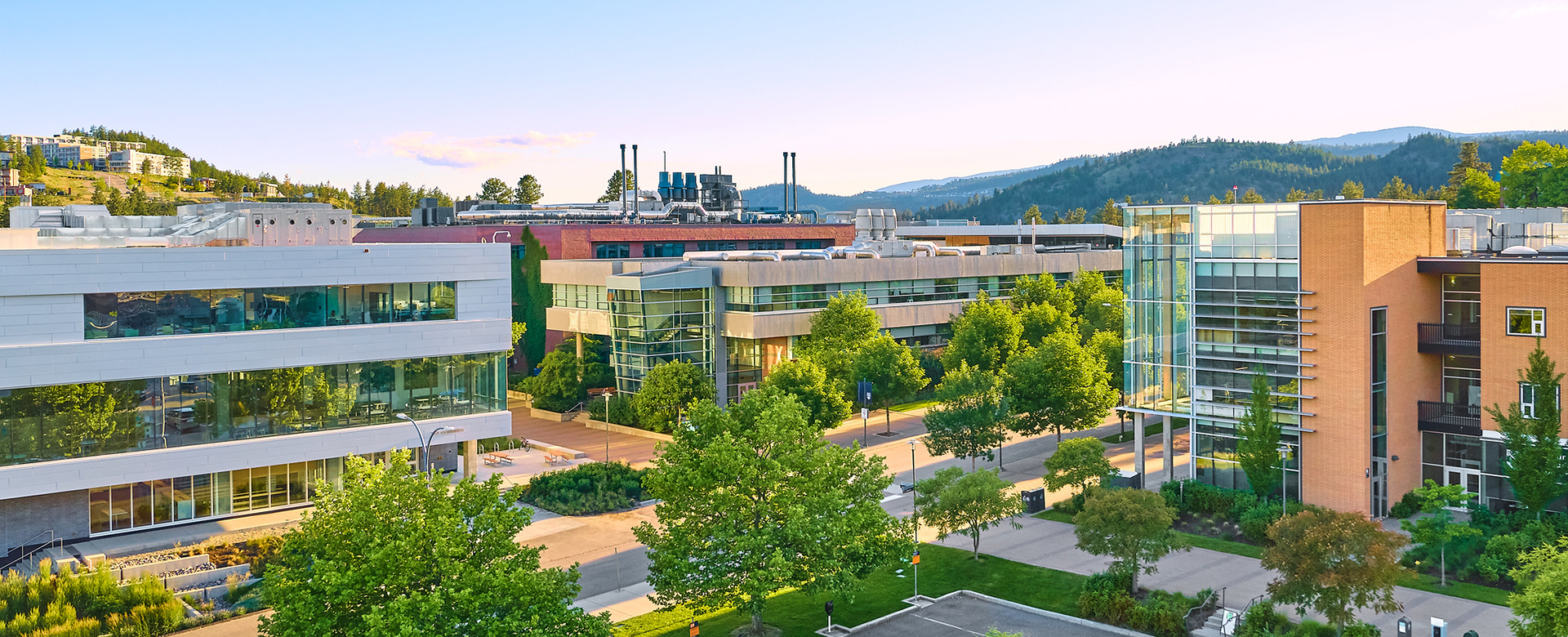
The annual meeting is a conference for all members and other interested parties. It is one of the central activities of CAIMS and has been held for over 30 years. The annual meeting covers all areas of applied and industrial mathematics with high profile speakers invited to give keynote addresses on currently active thematic areas. This year’s event will be offered in a hybrid format, with the in-person portion held on the UBC Okanagan campus.
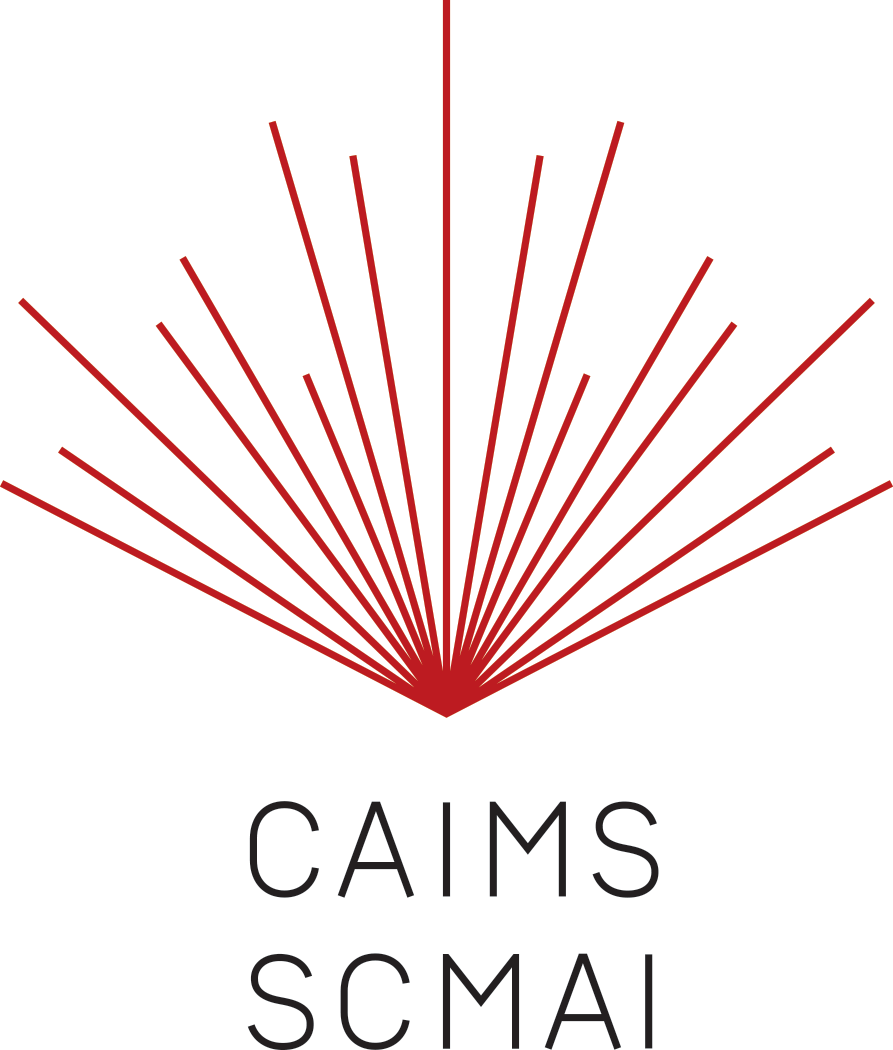
Themes and Theme Leaders
- Computational Mathematics
- Scott MacLachlan, Memorial University of Newfoundland
- Colin Macdonald (UBC Vancouver)
- Fluid Dynamics
- John Stockie, Simon Fraser University
- David Goluskin, University of Victoria
- Olga Trichtchenko, Western University
- Machine Learning
- Benjamin Bloem-Reddy, UBC Vancouver
- Sharan Vaswani, Simon Fraser University
- Sue Ann Campbell, University of Waterloo
- Mathematical Biology & Epidemiology
- Eric Foxall, UBC Okanagan
- Jianhong Wu, York University
- Sue Ann Campbell, University of Waterloo
- Optimization
- Ricardo Fukasawa, University of Waterloo
- Dominique Monnet, Polytechnique Montréal
- Amy Wiebe, Simon Fraser University
Conference Programme
The CAIMS conference programme is available!
*Schedule updated on June 11, 2022
Detailed Daily Schedules are now available!
Registration
Registration is now open.
Registration Fees
The registration fee for in-person attendees include a hot lunch each day and the conference banquet.
| Category | Early (before May 23rd) | Late (from May 24th on) |
| In-person CAIMS members | $400.00 | $450.00 |
| In-person non-members | $480.00 | $530.00 |
| In-person students/postdoctoral fellows | $225.00 | $275.00 |
| Online | $200.00 | $250.00 |
Conference Chair
Rebecca Tyson
CAIMS President
CMPS Department
UBC Okanagan
Scientific Committee
John Stockie, SFU
Bruce Shepherd, UBC Vancouver
Warren Hare, UBC Okanagan
Eric Foxall, UBC Okanagan
Conference Format
The in-person components of the conference will be held on the UBC Okanagan campus in Kelowna, BC. Please see the “Travel Information” section for further information.
Online components of the conference will include minisymposia, poster sessions, and some social activities. In-person attendees wishing to attend online conference components will need to find a quiet place to view the activity on a laptop or other device. There are many such locations on the UBC Okanagan campus.
Online conference talks will be delivered via zoom embedded within an online platform. In-person talks will be streamed for remote participants. There will be online and in-person poster sessions.
Detailed information regarding the format for talks, minisymposia, and posters can be found in the “Submissions” tab above.
Plenary Speakers
 Pascale Garaud is a Professor in the department of Applied Mathematics at the Baskin School of Engineering at UC Santa Cruz. Her research focuses on fluid dynamics and magnetohydrodynamics applied to astrophysics and occasionally geophysics.
Pascale Garaud is a Professor in the department of Applied Mathematics at the Baskin School of Engineering at UC Santa Cruz. Her research focuses on fluid dynamics and magnetohydrodynamics applied to astrophysics and occasionally geophysics.
She is on the Faculty of the GFD Summer Program (WHOI) and the founding director of the Kavli Summer Program in Astrophysics. She is Associate Editor for Geophysical and Astrophysical Fluid Dynamics, and on the Editorial Board of Physical Review Fluids. She became a Fellow of the American Physical Society in 2019.
 Aleks Donev is a Professor of Mathematics at the Courant Institute of Mathematical Sciences, part of New York University. Until the summer of 2010, he was a Luis Alvarez Postdoctoral Fellow at Lawrence Berkeley National Labs, working in the group of John Bell at the Center for Computational Sciences and Engineering. He was a Lawrence Postdoctoral Fellow at Lawrence Livermore National Labs from 2006-2009, where he was part of the Computational Materials Science group. From 2001-2006 he was a Ph.D. student at Princeton University in the Program in Computational and Applied Mathematics, and conducted research at the Princeton Institute for the Science and Technology of Materials in the Complex Materials Theory Group. He obtained his B.S. in physics at Michigan State University, where he was part of the research group of Dr. Phillip Duxbury.
Aleks Donev is a Professor of Mathematics at the Courant Institute of Mathematical Sciences, part of New York University. Until the summer of 2010, he was a Luis Alvarez Postdoctoral Fellow at Lawrence Berkeley National Labs, working in the group of John Bell at the Center for Computational Sciences and Engineering. He was a Lawrence Postdoctoral Fellow at Lawrence Livermore National Labs from 2006-2009, where he was part of the Computational Materials Science group. From 2001-2006 he was a Ph.D. student at Princeton University in the Program in Computational and Applied Mathematics, and conducted research at the Princeton Institute for the Science and Technology of Materials in the Complex Materials Theory Group. He obtained his B.S. in physics at Michigan State University, where he was part of the research group of Dr. Phillip Duxbury.
J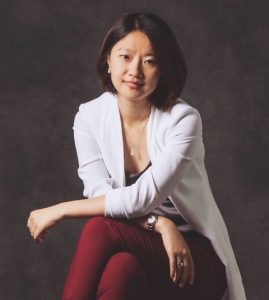 ingwei Hu is an associate professor at the Department of Applied Mathematics, University of Washington. She also holds an adjunct professorship at the William E. Boeing Department of Aeronautics & Astronautics. Her general research interests lie in numerical analysis and scientific computing, in particular, development of numerical methods for multiscale kinetic equations arising in various science and engineering applications. In 2017, she received the NSF CAREER award. She currently serves on the editorial boards for journals of La Matematica and Kinetic & Related Models.
ingwei Hu is an associate professor at the Department of Applied Mathematics, University of Washington. She also holds an adjunct professorship at the William E. Boeing Department of Aeronautics & Astronautics. Her general research interests lie in numerical analysis and scientific computing, in particular, development of numerical methods for multiscale kinetic equations arising in various science and engineering applications. In 2017, she received the NSF CAREER award. She currently serves on the editorial boards for journals of La Matematica and Kinetic & Related Models.
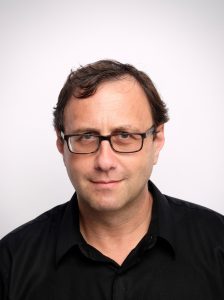 Mikhail Belkin received his Ph.D. in 2003 from the Department of Mathematics at the University of Chicago. His research interests are in theory and applications of machine learning and data analysis. Some of his well-known work includes widely used Laplacian Eigenmaps, Graph Regularization and Manifold Regularization algorithms, which brought ideas from classical differential geometry and spectral analysis to data science. His recent work has been concerned with understanding remarkable mathematical and statistical phenomena observed in deep learning. This empirical evidence necessitated revisiting some of the basic concepts in statistics and optimization. One of his key recent findings is the “double descent” risk curve that extends the textbook U-shaped bias-variance trade-off curve beyond the point of interpolation. Mikhail Belkin is a recipient of a NSF Career Award and a number of best paper and other awards. He has served on the editorial boards of the Journal of Machine Learning Research, IEEE Pattern Analysis and Machine Intelligence and SIAM Journal on Mathematics of Data Science.
Mikhail Belkin received his Ph.D. in 2003 from the Department of Mathematics at the University of Chicago. His research interests are in theory and applications of machine learning and data analysis. Some of his well-known work includes widely used Laplacian Eigenmaps, Graph Regularization and Manifold Regularization algorithms, which brought ideas from classical differential geometry and spectral analysis to data science. His recent work has been concerned with understanding remarkable mathematical and statistical phenomena observed in deep learning. This empirical evidence necessitated revisiting some of the basic concepts in statistics and optimization. One of his key recent findings is the “double descent” risk curve that extends the textbook U-shaped bias-variance trade-off curve beyond the point of interpolation. Mikhail Belkin is a recipient of a NSF Career Award and a number of best paper and other awards. He has served on the editorial boards of the Journal of Machine Learning Research, IEEE Pattern Analysis and Machine Intelligence and SIAM Journal on Mathematics of Data Science.
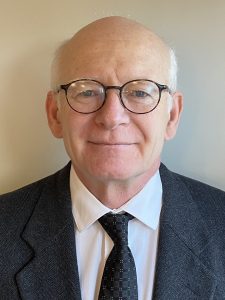 James V. Burke was born in New Jersey in 1955. He received a B.S. degree from Knox College, Galesburg, Illinois in 1977 and a Ph.D. in mathematics from the University of Illinois at Urbana-Chanpaign in 1985. He began his academic career in mathematics in 1983 at the University of Kentucky, Lexington, and accepted a position at the University of Washington, Seattle, in 1985 where he is now a Professor Emeritus. He is past Director of the Applied and
James V. Burke was born in New Jersey in 1955. He received a B.S. degree from Knox College, Galesburg, Illinois in 1977 and a Ph.D. in mathematics from the University of Illinois at Urbana-Chanpaign in 1985. He began his academic career in mathematics in 1983 at the University of Kentucky, Lexington, and accepted a position at the University of Washington, Seattle, in 1985 where he is now a Professor Emeritus. He is past Director of the Applied and
Computational Mathematical Sciences program and past Assistant Director at the Resource Facility for Population Kinetics at the University of Washington. In 2018 he was awarded the INFORMS Computing Society Prize jointly with Frank Curtis, Adrian Lewis, and Michael Overton for their pioneering work on gradient sampling methods. He is a member of the 2021 class of SIAM Fellows.
Professor Burke has published over 100 papers in theoretical, applied and computational optimization and convex and variational analysis with numerous contributions to nonlinear programming, infeasibility detection, convex-composite optimization, error analysis, gradient sampling methods, Kalman smoothing and non-Gaussian statistical estimation. His current work focuses on convex-composite functions and variable selection for linear mixed effects models.
 Gail Wolkowicz is a professor in the Department of Mathematics and Statistics at McMaster University. After earning bachelor’s and master’s degrees at McGill University, she completed her doctorate at the University of Alberta under the supervision of Geoffrey J. Butler. After postdoctoral studies at Emory University and Brown University, she joined the McMaster University faculty in 1986. She formulates and analyzes mathematical models in the form of nonlinear dynamical systems motivated by questions in mathematical biology. One goal has been to better understand basic population dynamics so that measurable criteria can be developed to enable scientists to predict under what conditions competing species can coexist. She is best known for her work on models of the chemostat, where she proved that the competitive exclusion principle holds for inter-species competition. Potential applications include water purification, biological waste decomposition, pest control, prevention of species’ extinction, control or eradication of certain diseases and anaerobic digestion to produce green energy. She has recently become interested in formulating and analyzing models involving difference equations. She has over 65 peer-reviewed publications and numerous prizes including the 2014 Krieger-Nelson Prize, recognizing her as an outstanding woman in mathematics and the 2015 Lord Robert May Best Paper Prize of the Journal of Biological Dynamics.
Gail Wolkowicz is a professor in the Department of Mathematics and Statistics at McMaster University. After earning bachelor’s and master’s degrees at McGill University, she completed her doctorate at the University of Alberta under the supervision of Geoffrey J. Butler. After postdoctoral studies at Emory University and Brown University, she joined the McMaster University faculty in 1986. She formulates and analyzes mathematical models in the form of nonlinear dynamical systems motivated by questions in mathematical biology. One goal has been to better understand basic population dynamics so that measurable criteria can be developed to enable scientists to predict under what conditions competing species can coexist. She is best known for her work on models of the chemostat, where she proved that the competitive exclusion principle holds for inter-species competition. Potential applications include water purification, biological waste decomposition, pest control, prevention of species’ extinction, control or eradication of certain diseases and anaerobic digestion to produce green energy. She has recently become interested in formulating and analyzing models involving difference equations. She has over 65 peer-reviewed publications and numerous prizes including the 2014 Krieger-Nelson Prize, recognizing her as an outstanding woman in mathematics and the 2015 Lord Robert May Best Paper Prize of the Journal of Biological Dynamics.
Plenary Abstracts
James Burke
Tales from the Optimal Frontier: Optimal value functions, theory and practice
Abstract:
Optimal value functions allow one to study the sensitivity of parametrized optimization problems as the parameters vary. They play fundamental role in optimization modeling, theory and numerics. This talk presents three optimal value function stories: conjugate duality, optimal value inverse functions and the scalar Newton’s method, and an application of optimal value functions in variable selection for mixed effects models in statistics. Conjugate duality, in the sense of Fenchel and Rockafellar, provides the foundations of convex duality theory in optimization. We give a quick overview intended for a general mathematical audience that motivates the ideas that follow. In our second story, we consider a general inverse function theorem for optimal value functions and show how it can be used to construct very efficient Newton based methods to solve a range of nonsmooth, constrained, convex optimization problems. In our final story, we describe a novel use of optimal value functions for covariate selection within linear mixed effects models (LME). These models, also known as mulilevel or hierarchical models, are used for analyzing nested or combined data across a range of groups or clusters where covariates are used to separate the total population variability (the fixed effects) from the group variability (the random effects). The relationship between covariates and observations is modeled using group specific coefficients that are linked by a common prior distribution across all groups. In this way LMEs are able to borrow strength across groups to estimate key statistics for the common prior in cases where the data within subunits may be sparse or highly variable. This is a non-linear, nonsmooth, nonconvex problem, where an optimal value function can be used to exploit underlying weak convexity to relax and regularize the problem and efficiently obtain accurate approximate solutions.
Gail Wolkowicz
A derivation Procedure for Multi-Species Discrete Population Models and Analysis of Planar Models: Introducing the Augmented Phase-Plane
Abstract:
After reviewing different strategies for deriving multi-species discrete mathematical models, a new strategy is proposed and then used to derive a predator–prey model and a model of competition between two populations. It is shown why phase-plane analysis of planar maps has not been as useful as it has been for planar systems of ordinary differential equations. To rectify this issue we introduce the next-iterate operator associated with the nullclines and their associated root-curves. The root-curves determine on which side of the associated nullcline the next iterate lies. How to use the phase portrait augmented with the root-curves, to determine both local and global properties of discrete planar models, is demonstrated. This provides an elementary approach that can be applied to help determine properties of the dynamics of planar discrete models.
Jingwei Hu
High order structure preserving time discretization for multiscale hyperbolic and kinetic equations
Abstract:
Many hyperbolic and kinetic equations involve small scales that lead to various asymptotic limits. Design of high order time discretization methods for such problems that are able to preserve the asymptotic limit as well as maintain the physical structure of the solution (such as positivity and entropy decay) has proven to be difficult. In this talk, we present two classes of time discretization methods achieving the aforementioned properties with a time-step restriction independent of small scales: one is an implicit-explicit (IMEX) Runge-Kutta method with derivative corrections and one is a special exponential Runge-Kutta type method. This talk is based on a series of works in collaboration with S. Gottlieb, Z. Grant, R. Shu, and X. Zhang.
Aleksandar Donev
Computational methods for complex suspensions
Abstract:
I will describe some ongoing research directions in my research group focused on rigid and flexible Brownian particles suspended in a Stokes fluid. These include colloidal suspensions of microrollers driven by a spinning magnetic field, electrohydrodynamics of electrolytes (ions in solvent), and suspensions of semiflexible fibers, which I will focus on for the majority of the talk. Every animal cell is filled with a cytoskeleton, a dynamic gel made of inextensible filaments, such as microtubules, actin filaments, and intermediate filaments, all suspended in a viscous fluid. Numerical simulation of such gels is challenging because the filament aspect ratios are very large. With my graduate student Ondrej Maxian, we are developing new methods for rapidly computing the dynamics of inextensible slender filaments in periodically-sheared Stokes flow, achieving linear scaling with the number of filaments even when nonlocal hydrodynamic interactions are taken into account. To enforce inextensibility, we parameterize the space of inextensible filament motions and strictly confine the dynamics to the manifold of inextensible configurations. We find that nonlocal hydrodynamics can change the viscoelastic moduli of cross-linked actin gels by up to 40%. As time permits, I will discuss the enormous mathematical and numerical challenges in accounting for Brownian bending fluctuations.
Pascale Garaud
Stellar fluid dynamics
Abstract:
Fluid dynamics plays a fundamental role in the life of stars, just as it does in the Earth’s climate, but remains relatively poorly understood in that context because direct experimentation with stellar fluids is almost impossible.
Fluid motions transport heat, chemical elements, and angular momentum, and many of the processes that take place on Earth also take place in stars. In this talk, I will discuss the similarities and differences between stellar fluid dynamics and geophysical fluid dynamics, focussing in particular on the surprising role of the Prandtl number, which is the ratio of kinematic viscosity to the thermal diffusivity. This number is O(1) on Earth, but asymptotically small in stars, which has fundamental consequences for the development of turbulence. Using this property, I will show how asymptotic theory can be used to make progress in understanding and characterizing turbulence in stars.
Prize Talks
CAIMS-Fields Industrial Research Prize – awarded to Ray Spiteri
Title: Industrial Mathematics in 12 relatively pain-free lessons
Abstract: Industrial mathematics is mathematics designed for uptake by the industrial sector. Its popularity has waxed and waned over time in the eyes of governments, the public, and students and academics alike. Industrial mathematics can feel like pure mathematics (cryptography, algorithm analysis), applied mathematics (modelling, numerical analysis), both (optimal control, compressed sensing), or neither (deep learning, uncertainty quantification); it can feel profound (quantum computing, game theory) or seemingly straightforward (linear programming, parameter fitting).
I have been around the industrial mathematics block a few times now and maybe even figured out a thing or two along the way. In this talk, I will share 12 of the lessons I have learned about industrial mathematics and the associated entangled collaborations. The lessons are designed to help your experience be relatively pain free, the pain having been largely absorbed by my partners, my students, and me.
CAIMS Research Prize – awarded to Frithjof Lutscher
Title: Biological Invasions in heterogeneous landscapes
Abstract: Biological invasions threaten ecosystem health around the
world and incur huge cost for management operations. Because of the
scales and risk involved, mathematical models are indispensable tools
for understanding and predicting the course of an invasion, as well as
for planning and optimizing management action. Biological invasions
have, in fact, inspired mathematical modelling and analysis in many
ways since the foundational work of Fisher, Kolmogorov, Petrovski and
Piskunov in the 1930s. While the historical focus was on invasions in
homogeneous landscapes, it has become increasingly clear that landscape
structure can facilitate or hinder invasions. Including landscape
heterogeneity into spatial spread models poses new challenges for
modelling and analysis and offers new insights into ecological
mechanisms and management options.
In this talk, I will present one approach to formulate reaction-
diffusion equations in strongly heterogeneous landscapes. This approach
leads to a system of coupled reaction-diffusion equations with
discontinuous matching conditions across interfaces. I will present
some general ecological insights, analytical challenges, and management
suggestions that result from the model.
CAIMS/PIMS Early Career Research Prize – Awarded to Elina Robeva
Title: Orthogonal and Equiangular Tensor Decomposition
Abstract: Tensor decomposition has many applications. However, it is often a hard problem. In this talk we will discuss two families of tensors with special structure which retain some of the properties of matrices that general tensors don’t. A symmetric orthogonally decomposable tensorcan be written as a linear combination of tensor powers of n orthonormal vectors. As opposed to general tensors, such tensors can be decomposed efficiently. We study the spectral properties of such tensors and give a formula for all of their eigenvectors. We also give polynomial equations defining the set of all orthogonally decomposable tensors. Analogously, we study nonsymmetric orthogonally decomposable tensors. To extend the definition to a larger set of tensors, we define equiangular decomposable tensors and study their properties. We show, for example, that for high-enough orders, the tensor power method can decompose such a tensor. We conclude with some open questions and future research directions.
Cecil Graham Doctoral Dissertation Award – Awarded to Ali Kara
Title: Near-Optimality of Finite Memory Approximations for POMDPs
Abstract: The talk focuses on partially observed Markov Decision processes (POMDPs). In POMDPs, existence of optimal policies has in general been established via converting the original partially observed stochastic control problem to a fully observed one on the belief space, leading to a belief-MDP. However, computing an optimal policy for this fully observed model using classical methods is challenging since the state space of the fully observed belief-MDP model becomes a set of probability measures. We provide an approximation technique for POMPDs that uses a finite window history of past information variables. We establish a rate of convergence result which relates the finite window memory size and the approximation error bound, where the rate of convergence is exponential under the filter stability conditions, where filter stability refers to the correction of an incorrectly initialized filter for a partially observed stochastic dynamical system (controlled or control-free) with increasing measurements. Finally, we establish the convergence of the associated Q learning algorithm for control policies using such a finite history of past observations and control actions. While there exist many experimental results for POMDPs, (i) the near optimality with an explicit rate of convergence (in the memory size) and relations to filter stability, and (ii) the asymptotic convergence (to the approximate MDP value function) for such finite-memory Q-learning algorithms are results that are new to the literature, to our knowledge.
Travel Information
UBC’s Okanagan campus is an innovative hub for research and learning. The campus was founded in 2005 in partnership with local Indigenous peoples, the Syilx Okanagan Nation, in whose territory the campus resides.
It’s also home to hundreds of hiking trails, a thriving arts and cultural district, over 120 wineries, authentic farm-to-table dining, several championship golf courses, and a booming tech scene.
As part of UBC—ranked among the world’s top 20 public universities the Okanagan campus combines a globally recognized UBC education with a tight-knit and entrepreneurial community. Since its inception, UBCO has experienced tremendous growth, including an increase in research funding of 366 percent.
UBC Okanagan Residences
Simple rooms in residence halls located right on campus, close to the conference venue, and appropriate for tighter budgets.
Hampton Inn
Nestled among the stunning mountains and lakes of British Columbia, Hampton Inn and Suites is right across the highway from Kelowna International Airport and within walking distance to many restaurants and amenities. Several golf courses, UBC Okanagan, and Okanagan Lake access are within 10 km. Free breakfast, free WiFi, and 24-hour airport shuttle are included.
CAIMS booking: 10 standard queen rooms have been reserved for CAIMS conference attendees at a cost of $195/room/night. The rooms are reserved for CAIMS until May 1st. The inn is a short walk (1 km) from campus.
Select a room at the Hampton Inn
Four Points Sheraton
Offering a gateway to the Okanagan’s numerous outdoor activities, Four Points by Sheraton Kelowna Airport is the perfect home base for your British Columbia adventures. Arrive at our hotel via our complimentary airport shuttle and enjoy our prime location near the Okanagan campus of the University of British Columbia, as well as scenic lakes, golf courses and wineries. Professionals appreciate our on-site meeting spaces and active travelers love our fitness center and indoor swimming pool with waterslide. When hunger strikes, head to our hotel’s restaurant for its diverse and delicious menu.
CAIMS booking: 10 standard queen rooms have been reserved for CAIMS conference attendees at a cost of $205/room/night. The rooms are reserved for CAIMS until May 1st. The hotel is a short walk (1 km) from campus.
Select a room at the Four Points Sheraton
With over 50 meeting rooms from lecture theatres to boardrooms, various catering spaces and over 500 sleeping rooms all set in a beautiful campus environment, UBCO is a conference destination on its own!
UBC’s Okanagan campus is on Hwy 97, 20 minutes north of downtown Kelowna and across from the Kelowna International Airport.
Please consult www.bctransit.com for the most updated information re: COVID-19 and travel.
Times Higher Education recognized UBC’s Okanagan and Vancouver campuses in its 10 most beautiful universities in Canada.
- Navigate the Okanagan campus: UBCO Maps and Directions






